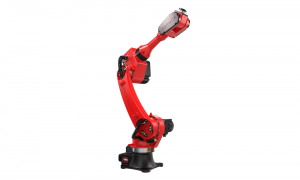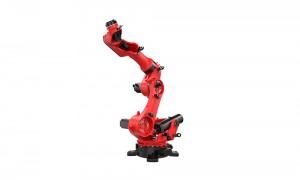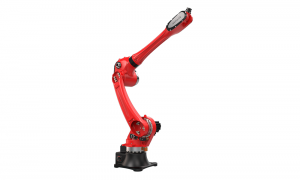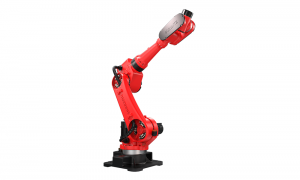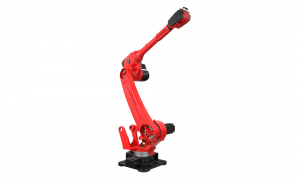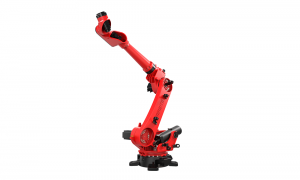BRTIRUS3050B type robot is a six-axis robot developed by BORUNTE for handling, stacking, loading and unloading and other applications. It has a maximum load of 500KG and a arm span of 3050mm. The shape of the robot is compact, and each joint is equipped with a high-precision reducer. The high-speed joint speed can work flexibly. The protection grade reaches IP54 at the wrist and IP40 at the body. The repeat positioning accuracy is ±0.5mm.

Accurate Positioning

Fast

Long Service Life

Low Failure Rate

Reduce Labor

Telecommunication
|
Item |
Range |
Max speed |
||
|
Arm |
J1 |
±180° |
120°/s |
|
|
|
J2 |
±180° |
113°/s |
|
|
|
J3 |
-65°~+250° |
106°/s |
|
|
Wrist |
J4 |
±180° |
181°/s |
|
|
|
J5 |
±180° |
181°/s |
|
|
|
J6 |
±180° |
181°/s |
|
|
|
||||
|
Arm Length (mm) |
Loading Ability (kg) |
Repeated Positioning Accuracy (mm) |
Power Source (kva) |
Weight (kg) |
|
1500 |
15 |
±0.08 |
5.50 |
63 |

In terms of safety: in order to ensure the safety of human-machine collaboration, collaborative robots generally adopt lightweight design, such as a lightweight body shape, internal skeleton design, etc., which limit the operating speed and motor power; By using technologies and methods such as torque sensors, collision detection, etc., one can perceive the surrounding environment and change their own actions and behaviors according to changes in the environment, allowing for safe direct interaction and contact with people in specific areas.
In terms of usability: Collaborative robots greatly reduce the professional requirements of operators through drag and drop teaching, visual programming, and other methods. Even inexperienced operators can easily program and debug collaborative robots. Early industrial robots typically required professionals to use specialized robot simulation and programming software for simulation, positioning, debugging, and calibration. The programming threshold was high and the programming cycle was long.
In terms of flexibility: Collaborative robots are lightweight, compact, and easy to install. It can not only work in small spaces, but also have a lightweight, modular, and highly integrated design that makes them easy to disassemble and transport. It can be redeployed in multiple applications with short time consumption and no need to change the layout. Moreover, collaborative robots can be combined with mobile robots to form mobile collaborative robots, achieving a larger operating range and meeting the needs of more complex application scenarios.
-

Human-machine
-

Injection molding
-

transport
-

assembling
Products categories
BORUNTE and BORUNTE integrators
In the BORUNTE ecosystem, BORUNTE is responsible for the R&D, production, and sales of robots and manipulators. BORUNTE integrators utilize their industry or field advantages to provide terminal application design, integration, and after-sales service for the BORUNTE products they sell. BORUNTE and BORUNTE integrators fulfill their respective responsibilities and are independent of each other, working together to promote the bright future of BORUNTE.
-
-
-

Top











